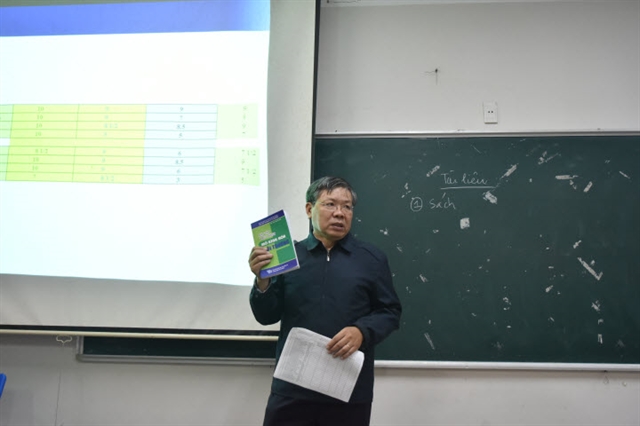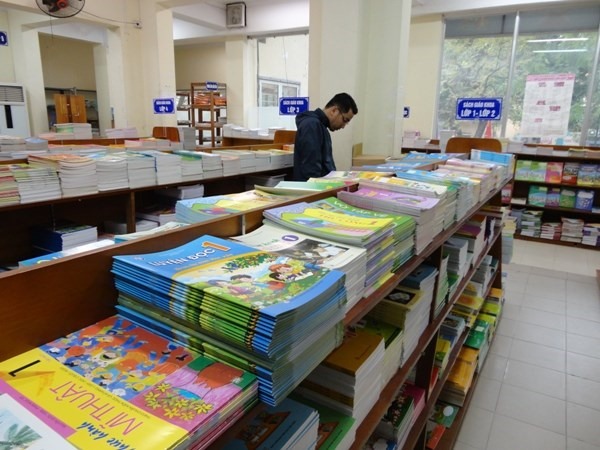 Opinion
Opinion

Associate Professor Nguyễn Văn Tùng, deputy director general of the Education Publishing House, talks to the Tuổi Trẻ (Youth) newspaper about the pros and cons of having more than two sets of school textbooks
 |
Associate Professor Nguyễn Văn Tùng, deputy director general of the Education Publishing House, talks to the Tuổi Trẻ (Youth) newspaper about the pros and cons of having more than two sets of school textbooks
It is said that in a near future, school textbook prices will become a competitive factor among publishing houses. Do you agree with that forecast?
Yes, in the near future the prices of school textbooks will become a competitive factor among different sets of textbooks. Of course, when many sets of textbooks are available in the market, the number of copies printed for each textbook set will be reduced but the printing price will be increased. The price of a set of textbooks still depends on the quality of the printing paper and the printing quality as well as the circulation and other issues. These factors are what publishing houses will be considering as they decide on the prices of their products.
However, among the school textbooks, the books for Việt Nam Escuela Nueva (VNEN) - an internationally funded project designed to make students more engaged and create opportunities for parents and community members to get involved in children’s education - are much more expensive than the textbooks of the Ministry of Education and Training. Will you please explain why?
The VNEN textbooks are printed in a larger size (19cm x 27cm) while those published by the Ministry of Education and Training (MOET) are printed at size 17cm x 24cm. In addition, the VNEN textbooks also contain the learning instructions for the students, plus guidance for teachers on how to use the books as well as exercises for the students. In other words, there is only one set of textbooks for both the students and the teachers. This is a key reason why the VNEN textbooks are much thicker than those of the MOET. Furthermore, the VNEN textbooks are printed in four colours with high-quality paper. That’s why the price of a set of VNEN textbooks is 1.6 times more expensive than that of the MOET.
But a set of VNEN books is used for only one year. Don’t you think it is a big waste?
In the first year, the VNEN project only started with grade 2 and then in the second year, VNEN will have textbooks for grade 3 and so on and so forth. Adding to that, more schools will apply the VNEN model. As a result, the number of VNEN textbooks will increase year on year.
However, just like textbooks used at a normal school, the MOET has also advised the schools to make the best use of the textbooks of the previous year.
Of course, in each new edition of the textbook, new content is to be included. This is a normal practice all over the world, not only in our country. More recently we have considered the idea that the new content should only be included in the teachers’ textbooks or made it into a small booklet to help the teachers guide their pupils on how to use the textbook.
These days, some people have started to draft new school textbooks based on the new education curriculum – VNEN. Do you know the progress of writing these school books?
To my understanding, the Hà Nội Company for Investment and Educational Development is assigned to be the lead entity for writing such a draft of the new school books. By now everything is under control. In short, everything has been well prepared, ranging from the human resources to the roadmap for writing the textbooks and holding consultation workshops to hear comments from experts.
When the MOET officially makes public which subjects will be included in the official curriculum, we’ll start to write the textbooks.
What novel ideas from the VNEN textbooks will be included and further developed in this set of textbooks?
I should say that the best ideas of the VNEN textbooks will be reflected in the new set of school textbooks. For example, each lesson will be logically designed in four parts: introduction, new knowledge, exercises and then application. Such a structure has already been described in the Circular 33 of the education ministry.
The content of each lesson will be manifested through the students’ class activities and the teacher should guide the students on how to do their assignments. This is a good way to help the students develop their learning ability — VNS